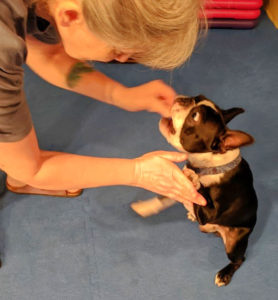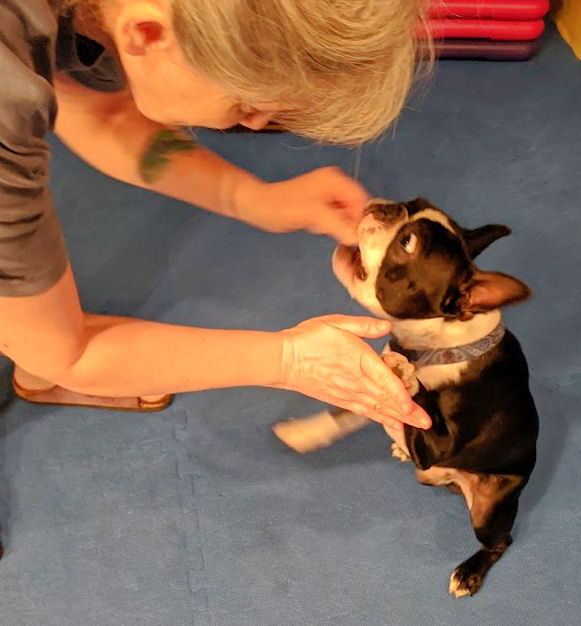You choose just about everything in your dog’s life. The entire schedule is yours. So is everything your dog has, is allowed, and does. There is one thing you can’t decide for your dog. Your dog decides the reward value. You can’t make your dog love cheese.
All dog owners know that dogs definitely have preferences: which toy is best, what food is tastiest, which bed is most comfortable. And they absolutely have a treat pyramid, from the golden, most cherished choice on top, to their everyday food at the bottom.

For some dogs, the kibble at the bottom is still worth jumping through fire. Others can easily walk away. The first type of dog is easier to train – you know they’ll be motivated by any tidbit. The second kind of dog, the one who doesn’t care, is more difficult.
It may not be food
You don’t get to pick the reward that’s most valuable to your dog. Sometimes it takes trial and error to figure out what’s at the pinnacle. It may not be food. Or a toy. It could be something odd, like one of our dogs who adored celery.
In the case of one dog, it’s being entirely avoided.
This week in our Rally class there was a dog who suddenly became afraid of the world. According to her owner, who’s a friend and Obedience mentor, it happened about a year ago. There wasn’t any incident, nothing bad happened to this dog. She just shut down.
Slowly, the dog is starting to open back up. But she was clearly nervous and anxious in class, although she did do the exercises with her owner. She gave any other person a very wide berth. Strangers trigger her fear.
Try something out of the box
Working with her owner, we came up with the idea of rewarding this dog by backing off. In competition Rally or Obedience, there is a judge in the ring with the team. Some judges follow the handler and dog closely, others allow more distance. There isn’t any rule about it, it’s just the judge’s preference. So a dog destined to compete in performance sports should be comfortable with another person in the ring, however close or far.
We decided to work on the “Front!” exercise with Hope acting as the “judge” in the vicinity. In this chunk of training, you’re heeling with your dog, then stop and call the dog to “Front!” The dog’s supposed to come around to face you and sit squarely in front of you.
When they began the exercise, Hope was about six or seven feet away. Close, but not hovering. When the dog performed the exercise, even shying away from the “judge,” Hope backed off. This dog’s reward was the scary person going away.
Try a few times, then stop
We repeated the sequence about three or four times, then quit. Even though the dog was doing better with each repetition, you don’t want to flood the dog with too much too soon. We don’t believe you have to stop on an “up” note. You stop before your dog signals stress, frustration, or anxiety. Give your dog time to process the session.
Your dog probably wouldn’t consider being ignored a reward. This dog does. In time, dogs transfer the value of the reward to the behavior that triggered the pay-off. This dog will associate “Front!” with good things happening.
That’s how most, if not all, dog behavior works. Dogs always do what’s most rewarding to them. It’s not always easy to figure out exactly what that is. Through trial and error, creative thinking, and observation, you’ll hit on the right stuff for your dog.







